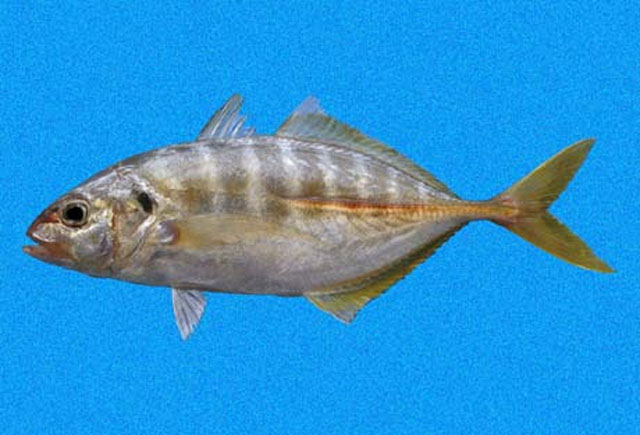| Carangidae (Jacks and pompanos), subfamily: Caranginae |
| 37 cm TL (male/unsexed) |
|
pelagic-oceanic; depth range - 50 m, oceanodromous |
| Eastern Central Pacific: western coast of Baja California, Mexico to Peru (Ref. 11482). |
|
Body elongate, moderately deep, and compressed; snout slightly pointed; adipose eyelid poorly developed; lower branch of the first gill arch with 28 to 30 gill rakers; chest entirely covered by scales; lateral line arched anteriorly, with 46 to 53 strong scutes in the straight part; back gray blue; belly silvery with green-gold highlights; 8 to 9 incomplete, dark, vertical bars along the flanks; edge of operculum with a very conspicuous black stain (Ref. 55763). |
| Adults inhabit coastal and oceanic waters (Ref. 9283). They feed on small fishes, crustaceans and other benthic invertebrates (Ref. 37955). Marketed fresh and salted or dried (Ref. 9283). |
|
(Ref. 96402)
|
| harmless |
|
Source and more info: www.fishbase.org. For personal, classroom, and other internal use only. Not for publication.
Page created by Jen, 05.08.02,
php script by kbanasihan 06/09/2010 ,
last modified by
dsantos, 20/08/10

